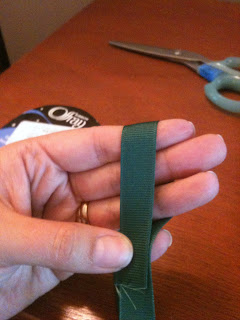Free but funky?
We got a free tricycle from a neighbor, but the frame was
pink. Since I planned to clean it anyway, I decided it would be worth the
effort to spray-paint the frame.
Like every painting project (ever)… the prep takes the most
time. Still “round trip” this project was only about 2 hours (plus about 6 hours drying time). The
secret is to use Glad “Press-n-seal” wrap to mask the awkward areas (thanks
Pinterest!)
Color?
I picked a helmet first, and then picked the spray paint to
coordinate. I got basic glossy spray paint: Rustoleum “Gloss Protective Enamel”
($3) because it was cheap and it matched the main color on the helmet. (More about toddler helmets below).
Clean
I detached the removable basket and cleaned the plastic
areas with a Mr. Clean Magic eraser. I cut mine into 2” chunks so that they last
longer. This project just consumed one chunk.
Adjust
This trike is adjustable, so I removed the bolt and
positioned the frame in the largest setting. Since we will eventually need to
use the bigger settings, I didn’t want a weird unpainted ring on the frame later.
Scuff
I scrubbed off some rust with a leftover (very fine) 3M sanding block. Then I scuffed up all the pink areas until they were no longer
glossy. Note: this did remove the name off the frame (if you are thinking about re-sale later).
Mask
Use painters tape and Press-n-seal to cover
everything but the frame.
Paint
I flipped the trike upside-down to start, and followed the directions
on the can. I put on two coats of paint, although one was covering it pretty well.
Then I flipped it right-side-up and did two from that angle.
Unveil
I let the paint dry a few hours until it was no longer
sticky and I couldn’t dent it with my fingernail, then I removed all the tape
and plastic.Ta-da!
Adjust
I waited as long as I could to put the basket back on and adjust
the size-bolt again, but it was only 6 hours dry time all-together. So it's really a same day project, I
painted it during an early nap and He used it that same evening.
Toddler Helmets
I’m glad that I measured my son’s head because I would have
bought the wrong size helmet. Although my son is only two, his head is 20”
around (mine is a women's med/large at 21.5”).
I bought this Schwinn one from Walmart ($17) made for ages 5+
that has an adjustable dial for fit. For us, the toddler sizes were too small since
the age 3+ helmet was exactly 20” at the largest setting.
Not Sure if they Need a Helmet?
Truthfully, I was on the fence about getting a helmet, since
I planned to be within arm’s reach of him (plus I survived childhood without one).
The deciding factor was actually seeing him flip the trike and having to
physically “catch” his head before it hit the pavement (while he was going sort of fast).
...I had assumed he couldn’t go fast enough to flip it over
while peddling, but I didn’t consider the momentum from the slight grade of our
driveway. Gaining speed going down the driveway, he turned the front wheel 90 degrees, and
the forward momentum of his body was enough to pull the thing over. I figured I
was probably lucky in catching him that once, and shouldn’t tempt fate by
skipping the helmet...
Anyhow, I already got the trike for free, so the helmet seemed like a worthy purchase at less than $20, in any case it's still much cheaper than urgent care!
Here He is enjoying his "dude" bike that mommy "fixed"





































